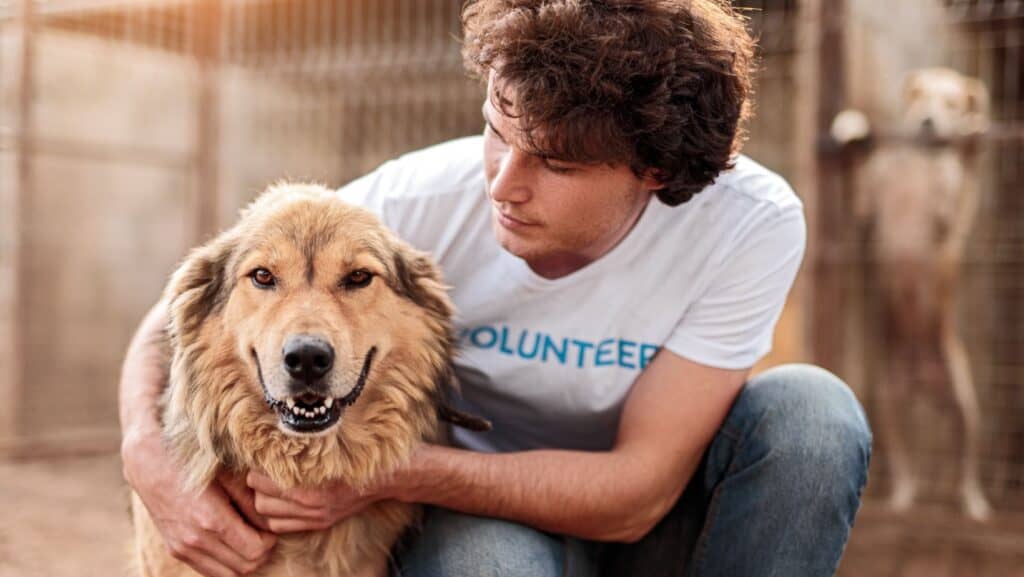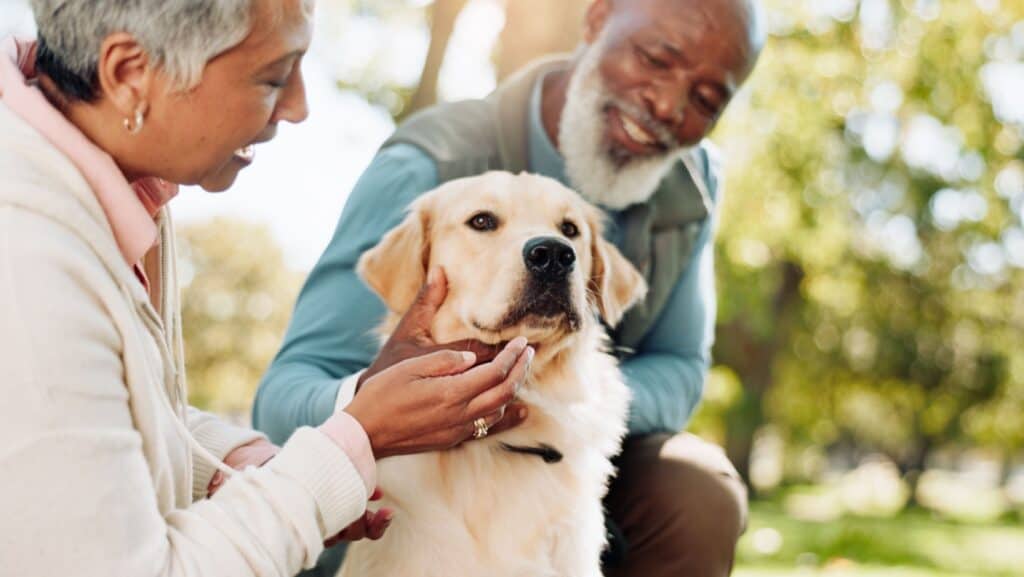How to Adopt a Dog the Right Way: Avoiding Common Pitfalls and Finding the Right Match
Adopting a dog can be one of the most rewarding decisions you ever make. But it’s not as simple as showing up at a shelter, falling in love with the first puppy you see, and living happily ever after. There’s a right way—and plenty of wrong ways—to approach dog adoption. Too often, people rush the process, choose the wrong dog for their lifestyle, or support organizations that prioritize volume over real, lasting placements. If you’re thinking about adding a dog to your life, here’s how to do it well—and what pitfalls to avoid.
Choosing the Right Shelter or Rescue

Not all shelters and rescues are the same. Some are outstanding, carefully vetting adopters, providing full disclosure about a dog’s health and behavior, and offering post-adoption support. Others, unfortunately, are more focused on moving dogs out the door quickly without proper screening or preparation, and yes, they are sometimes operated as money makers, much more interested in the bottom line than helping you and dogs find forever homes.
When screening a shelter or rescue, ask:
- What veterinary care has the dog received? (Spay/neuter, vaccinations, health checks?)
- Has the dog’s temperament been formally evaluated? By whom? What are their qualifications? (See below).
- Can you meet the dog multiple times before deciding?
- Is there a trial period or return policy if the match doesn’t work?
- Will they disclose all known behavioral issues, not just the good parts?
A good organization wants the right match—not just any match. If they pressure you to adopt quickly, won’t provide details, or gloss over concerns, move on.
Ask How Dogs Are Screened

Being screened for physical health is a given and should be obvious; a veterinarian should have signed off on the health the dog. But what about the mental stability of the dog? What about any behavioral issues? It is not uncommon for dogs to enter the shelter system because of behavior problems. You want to adopt with your eyes open.
Certified Behavior Professionals on Staff or Consulting

Look for shelters that either employ or consult with:
- Certified Applied Animal Behaviorists (CAABs)
- Veterinary Behaviorists (Diplomates of the ACVB)
- Certified Dog Behavior Consultants (CDBC through IAABC)
- CPDT-KA or CPDT-KSA trainers (via CCPDT) with additional credentials or experience in behavioral evaluations
These professionals have training in both normal and abnormal canine behavior and can distinguish between issues that are manageable and those that may pose serious risks to adopters.
Use of Evidence-Based Behavior Assessments

A red flag is any shelter that brags about “passing” all dogs through a single test. Good shelters use a multi-step process, not just one “temperament test.” Look for:
- Behavioral evaluations over multiple days
- Observations in different contexts (in kennel, in playgroups, around food, on walks)
- Use of validated tools such as SAFER, B.A.R.K., or Match-Up II, although even these have limitations and must be paired with professional interpretation
Transparency in Reporting Behavior

Qualified shelters will provide written behavior notes or summaries and be honest about:
- History of bites or aggression
- Triggers like resource guarding, separation anxiety, or reactivity
- Whether the behavior was observed in foster or shelter settings
- What kind of management or training may be needed going forward
Shelters should also be transparent if they did not observe certain behaviors due to lack of time or staffing.
Behavioral Support After Adoption

Highly reputable shelters offer:
- Post-adoption counseling
- Free or discounted sessions with behaviorists or trainers
- Clear, written guidance for managing any known issues
This indicates a serious commitment to the dog’s success and the adopter’s safety.
Appropriate Use of Foster Homes for Behavior Evaluation

Some behaviors (like separation anxiety or house training) simply can’t be assessed in a kennel environment. Shelters that use foster homes to evaluate behavior in real-life settings are often better able to identify red flags or strengths.
Ongoing Staff Education

Ask if staff receive regular training from certified professionals. Shelters that prioritize continuing education on fear-free handling, enrichment, and modern behavior science are more likely to make thoughtful, well-informed matches.
Individualized Behavior Plans

If a dog has known behavioral needs, a qualified shelter should offer or have already started a behavior modification plan, ideally under the supervision of a credentialed behaviorist. Beware if they say “he’s a great dog, just needs love” when the dog is lunging at the kennel door. That’s not a plan—it’s a deflection.
Realistic Adoption Counseling

Staff should talk candidly (but not alarmist) about what to expect. If everyone is “perfect” or “just needs a little TLC,” that’s a sign the behavior screening may be superficial or nonexistent.
Ethical Limits on Behaviorally Dangerous Dogs

Responsible shelters may humanely euthanize dogs with a history of unprovoked aggression that cannot be safely managed. There are shelters that adopt out dogs with serious bite histories without full disclosure. You do not want to end up in this situation.
References and Reviews

Don’t hesitate to ask:
- Can you speak with someone who adopted a dog with similar issues?
- Can you see any notes from a behaviorist?
You can also check reviews online or ask local vets or trainers what they think of that shelter’s adoption practices.
Assessing Your Own Readiness and Lifestyle

Before you even set foot in a shelter, take a hard, honest look at your life. What kind of dog fits your daily routine, energy level, and experience?
- How much time do you realistically have for exercise, training, and attention?
- Are you comfortable handling a puppy’s housebreaking and chewing stages—or would an adult dog be better?
- Can you afford veterinary care, food, training, grooming, and unexpected expenses?
- Are you committed for the long haul—potentially 10 to 15 years or more?
Choosing a dog based purely on looks or pity is a recipe for heartbreak. The best adoptions happen when both dog and human needs align.
Avoid the Pitfall of Impulse Adoptions

It’s easy to fall in love with a sad pair of eyes at an adoption event. But impulse adoptions often lead to mismatches that aren’t fair to either party. Before adopting:
- Research breeds and breed mixes. (Energy levels, grooming needs, trainability.)
- Spend time interacting with the dog outside of a high-stress event environment.
- Sleep on it—good decisions aren’t made under emotional pressure.
Remember, rescuing a dog doesn’t just mean saving them once—it means committing to their care for life.
Why “Adopt, Don’t Shop” Is Misleading

You’ve seen the bumper stickers: “Adopt, don’t shop.” It sounds noble. But the reality is more complicated.
“Adopt, don’t shop” unfairly vilifies responsible breeders, who are vital to the future of healthy, well-tempered dogs. Ethical breeders invest years into health testing, careful placement, and lifetime responsibility for every puppy they produce. Painting them with the same brush as backyard breeders and puppy mills is wrong—and harmful.
Responsible Breeders Will Never Allow Their Dogs To Enter The Shelter System

Adoption is a wonderful choice, but it’s not the only ethical one. Some people need specific traits, such as a stable temperament for work or sport, or predictability in size and behavior. In these cases, working with a responsible breeder makes sense. Let’s say you want a beagle. Look up the parent club of that breed (often the XYZ Club of America) and contact them. They often have a rescue arm and are typically very well run.
In addition, ethical breeders will always take a dog back, no matter what; working with them prevents the cycle of dogs entering the shelter system. (The dogs in clubs’ rescue systems are typically those bred by disreputable breeders; the ethical breeders are taking responsibility for their dogs as well as their breed in general, being devoted to their breed).
The real message should be: Adopt responsibly, or shop responsibly. The goal is finding the right dog for the right home, not shaming people for making informed choices.
Training and Transitioning Your New Dog

Even the most perfect match will require work. Your new dog will need time to adjust—often weeks or months, not days. Expect accidents, fear, and some uncertainty at first.
- Set clear, gentle boundaries from the start.
- Use positive reinforcement training.
- Keep routines consistent.
- Limit overwhelming introductions to new people, places, and other pets.
Many dogs returned to shelters are victims of unrealistic expectations. Patience and structure are your best tools.
Don’t Expect a “Perfect” Dog

Every dog, like every person, comes with strengths and challenges, whether they are from a shelter or not:
- Some pull on leash.
- Some take time to trust.
- Some need work around other dogs.
Don’t look for a flawless dog. Look for a dog whose needs and quirks you’re willing and able to meet with kindness, leadership, and commitment.
Conclusion: Adopt Thoughtfully, Adopt Well

Adopting a dog isn’t about saving them—it’s about forming a mutually beneficial relationship based on respect, responsibility, and realism. Whether you adopt or work with a breeder, the principles are the same: know what you’re getting into, choose carefully, and commit fully.
A well-matched dog and owner team benefits everyone—the dog gets stability and proper care, and the owner gains a loyal companion who truly fits their life. That’s the goal. Not a quick emotional rescue. Not ticking a box. A thoughtful, informed, and joyful partnership that stands the test of time.
How Much Does a Pet Really Cost? What You Need to Know

Bringing a pet into your home is a huge commitment—emotionally, physically, and financially. While we love our furry companions, the reality is that pet ownership comes with a price tag that many people underestimate. Whether you’re considering adopting a dog or a cat, understanding the annual costs involved can help you budget and ensure you can provide the best care for your pet. So, let’s break it down.
READ: How Much Does a Pet Really Cost? What You Need to Know
We have a fantastic collection of dog and cat content you may want to explore! Click here!
Join Us

Join us on this empowering journey as we explore, celebrate, and elevate “her story.” The Queen Zone is not just a platform; it’s a community where women from all walks of life can come together, share their experiences, and inspire one another. Welcome to a space where the female experience takes center stage. Sign up for our newsletter so you don’t miss a thing, Queen!







